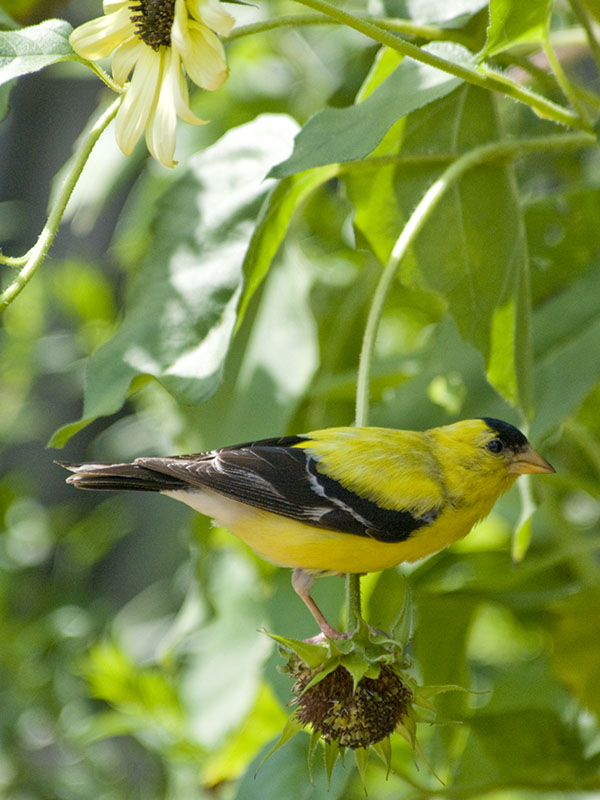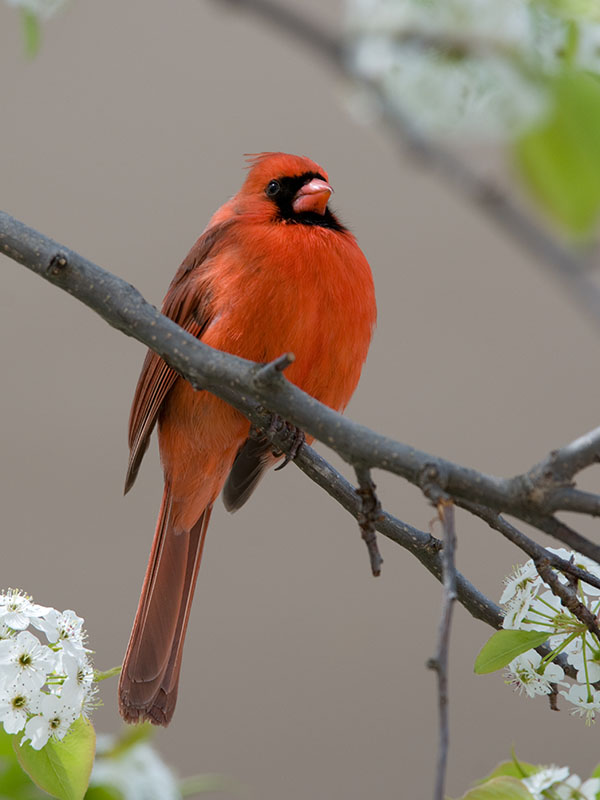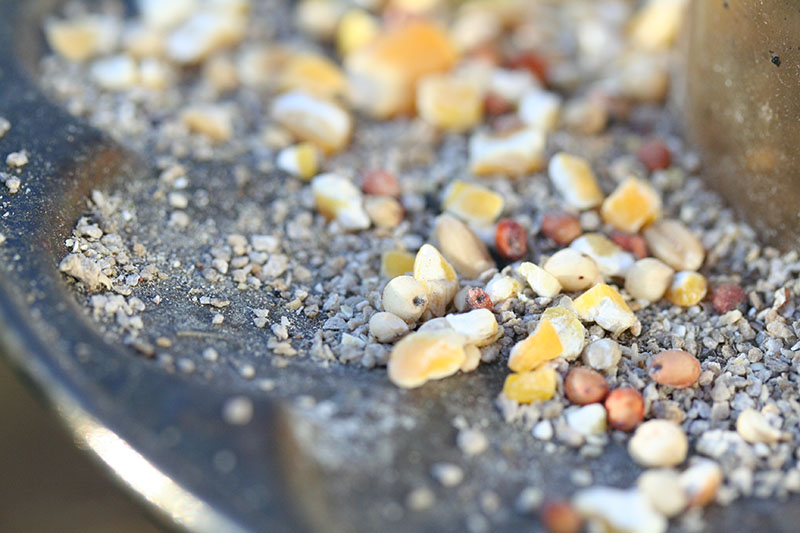Attracting birds to the winter garden can be a fun-filled and action-packed spectator sport. Supplying our feathered friends with birdseed and one or two well-placed feeders keeps them energized and you entertained.
Watching the antics of some of the most common feeder birds—chickadees, sparrows, finches (including cardinals) and woodpeckers—helps make winter an enjoyable season. Once the birds begin to visit your feeders, learn to identify them. With a bird identification book or chart from any seed supply store, you'll be on your way to becoming an identification expert.

Goldfinch on a flower head

Common Cardinal
Seed Mixes
Birds do have seed preferences. That's why there are so many different types to choose from. With the smorgasbord of seed that's offered in a bag of mixed seed, you'll see many different birds gathering at the feeder. This is the seed of choice for many because it's reasonably priced and does the job, but unfortunately it leaves a mess on the ground. Filler seeds like milo and gray millet that are added to low-cost mixes are rarely eaten and lie scattered under the feeder. To keep things neater, a pricey alternative is a "no-waste" mix, which offers hulled peanuts, sunflower seeds, white millet, and corn pieces, with no filler.
Another hit with birds is black oil sunflower seed. It has the highest fat content of all seeds, which is what birds need during winter to help keep them warm. All birds will quickly consume it. During extremely cold weather, when natural food is hard to find, you'll see woodpeckers and even robins helping themselves too!

Birdbaths
Water as well as food helps keep birds warm, especially during winter. A heater made especially for birdbaths will keep the water from freezing. This way the birds can still bathe and preen themselves to oil their feathers for insulation against the cold. If it's an extremely cold day, you may have to refill the bath due to the number of bathing and splashing birds that will show up. This is a real treat to watch.
Another way to attract birds is to plan your garden with birds in mind. You might be able to plant a few shrubs, a tree or two, and some perennials that will be "bird magnets."
Trees and Shrubs
Trees and shrubs provide shelter, nesting places, roosting sites, and food, either directly through their fruit, nuts, or seeds or indirectly through the insects they attract. Heavily foliaged plants like evergreens provide great roosting sites. The berries from yews are loved by many birds, and a thick yew hedge is an example of a good nesting site. Oaks attract about 300 different species of insects, and their nuts are favored by blue jays who will nest and roost there. White pines attract chickadees for nesting and offer roosting sites during winter. Hollies produce dark, red fruit, which ripen in early winter if the holly is deciduous, and late winter if it's evergreen. Robins love holly fruit.
Junipers come in all shapes and sizes. The small, blue-green fruits they produce are favored by robins. The shade-tolerant Eastern hemlock is a popular suburban tree whose seeds are eaten by finches and chickadees and whose branches are good for roosting.
Plant some perennial, native flowers to provide seeds (don't deadhead them) for smaller birds during the off-season. Purple coneflower, black-eyed Susan, aster, anise hyssop, and blazing star are treasured by goldfinches, house finches, sparrows, juncos, and chickadees.
Once you start feeding birds, you'll get hooked and want to know more about various feeders, seeds, and birds. With its hundreds of acres of natural spaces, lakes, and plant species, the Chicago Botanic Garden is a prime site for bird-watching. Visit the library, take a class at the Joseph Regenstein, Jr. School of the Chicago Botanic Garden, or sign up for a spring bird walk to enhance your bird knowledge.


